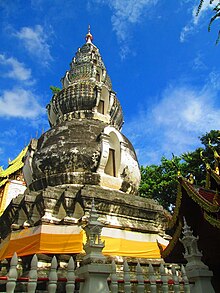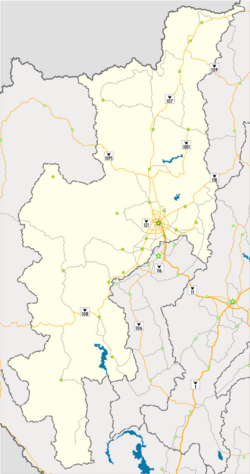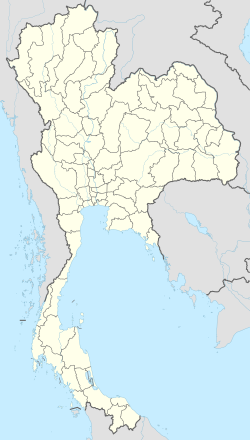| Wat Ku Tao | |
|---|---|
วัดกู่เต้า | |
 | |
| Religion | |
| Affiliation | Buddhism |
| Sect | Theravada Buddhism |
| District | Mueang Chiang Mai District |
| Province | Chiang Mai Province |
| Location | |
| Municipality | Chiang Mai |
| Country | Thailand |
| Geographic coordinates | 18°48′09″N 98°59′19″E / 18.802366°N 98.988744°E |
Wat Ku Tao (Thai: วัดกู่เต้า; "Temple of the Gourd Pagoda") is a Buddhist temple in Chiang Mai, Thailand. The temple was built in 1613 to enshrine the remains of Nawrahta Minsaw, the first Burmese ruler of Lan Na.[1] The temple is known for its distinctive chedi, which was built in the Yunnanese style, arranged in a series of five diminishing spheres that represent the five historical and future Buddhas.[1] The temple presently caters to Chiang Mai's Shan community.[2]
Formerly known as Wat Veru Vanaram, the temple features a striking pagoda resembling a stack of five watermelons, earning it the local moniker "Chedi Ku Tao" (meaning "watermelon pagoda" in Lanna dialect). Both its architecture, interior decor, and enshrined Buddha images showcase a strong influence of Burmese artistic traditions. History points to the importance of the temple as the home to the ashes of Nawrahta Minsaw, the first Burmese overlord of Chiang Mai.[3]
- ^ a b Freeman, Michael (2001). Lanna: Thailand's Northern Kingdom. Thames & Hudson. ISBN 9780500976029.
- ^ Eberhardt, Nancy (2009-05-01). "Rite of Passage or Ethnic Festival? Shan Buddhist novice ordinations in northern Thailand". Contemporary Buddhism. 10 (1): 51–63. doi:10.1080/14639940902968913. ISSN 1463-9947.
- ^ ""วัดกู่เต้า" / ล้านนาคำเมือง". Matichon Weekly.

